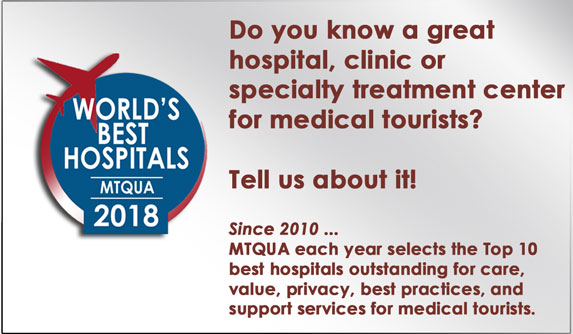 In recent years, a number of forecasts on worldwide gross medical tourism revenue have been put forward by analysts (McKinsey, Deloitte), interested parties (hospitals), trade show promoters and academics.
In recent years, a number of forecasts on worldwide gross medical tourism revenue have been put forward by analysts (McKinsey, Deloitte), interested parties (hospitals), trade show promoters and academics.
One of the early predictions of global revenue for medical tourism, $100 billion by 2012, actually included wellness seekers and many others who we today may not strictly classify as medical travelers seeking acute care. Recent reports focus more on numbers of people who might travel (up to 700,000 patients a year) and the savings they would create for the home healthcare system ($20 billion) by taking treatment abroad.
These numbers have been shown to be meaningless. Yet despite our growing awareness of the poor quality of the data, many proponents of medical tourism continue to use these flawed numbers to promote their visions of the future of medical tourism.
Defining a medical tourist
There is still no agreed upon universal methodology for data collection let alone an agreed upon definition of medical tourist. Each special interest group records its data differently to bolster its own argument of exponential growth, galloping growth or just growth. Each country’s tourism bureau counts medical tourists in ways to justify their budget increases for the promotion of medical tourism.
In Mexico, anyone crossing the border to purchase prescription drugs is still counted as a medical tourist. In Thailand, a patient who visits a lab, gets medication, has a chest x-ray, has a mammogram, takes a stress test, consults with a general practitioner and a surgeon, and then is admitted as an inpatient used to be counted as 8 medical tourists.
This practice has stopped for the most part: one patient is counted as one patient for one episode of care, or at least for one day’s worth of stops in various departments around the hospital.
Medical tourism revenue predictions
Is there a coming explosion in growth in this sector? Absolutely! The need is there, the trend line is rapidly exceeding expectations and attracting major interest from governments, medical associations, employers, insurers and large consumer advocates like AARP.
Unfortunately, the revenue predictions were absurd from the start, and have stayed so, attracting operators who expect to cash in, as a medical travel agent providing patient services, an insurance agent selling complications and international liability insurance, a technology entrepreneur promoting a web 2.0 or 3.0 solution for hospitals, a doctor-turned-business consultant offering marketing or systems solutions, or a conference organizer creating industry events that few actually attend.
The predictions also send the wrong message to hospitals and physicians. Those who quickly jump on the bandwagon become disillusioned and disappointed with the reality of lowered expectations and empty consulting rooms.
How much is cost saving in medical tourism
What do we reliably know about the value of medical tourism? We know an aging population with attendant health problems presents a significant picture of potential need. We know the American uninsured or underinsured population needs medical care. We know the British, Canadian and Australian patient is faced with unacceptably long waits for treatment. We know the Scandinavian governments have long term contracts with hospitals in Europe and Asia to provide medical care abroad. We know the European Union accepts the principle – and the need – for access to medical care from a wider medical community.
And we know we have a shortage of doctors and nurses which will become dire as the newly emerging medical destinations find ways to keep their medical personnel at home.
What numbers can we rely on? One only has to look at the projections of numbers in the tourist trade to safely take a position on a percentage that would willingly become medical travelers. The numbers are huge. The potential revenue will become a major source of income for participating hospitals.
Offshore hospitals in countries like India, Thailand, Singapore, Malaysia, Korea and South Africa along with others in former Comicon countries are intently preparing for international medical travelers. They are present at trade shows and conferences, signing up for medical tourism workshops, learning new skills to manage the cultural expectations and needs of new international patients.
Recession slowed medical tourism growth temporarily
The ongoing recession has put a damper on activity from this sector. Numbers are significantly down from three years ago for medical tourism traffic from the U.S. and parts of Europe. Interest in medical tourism as seen in search activity on the internet continues to wane. But the fundamental need remains and the latent interest level is high.
Medical tourism is an evolving growing phenomenon which if managed appropriately will provide affordable competitive professional care to those who select this route.
This article was first published July 10, 2009 in Healthcare Finance News. It has been updated.
Related articles

 >
>
Pingback: Bangkok medical tourism troubles · MTQUA | Medical tourism quality, safety and patient care best practice.
Pingback: The new economics of medical tourism: a new era · MTQUA | Medical tourism quality, safety and patient care best practice.
Pingback: U.S. Health Reform v. Medical Tourism · MTQUA | Medical tourism quality, safety and patient care best practice.